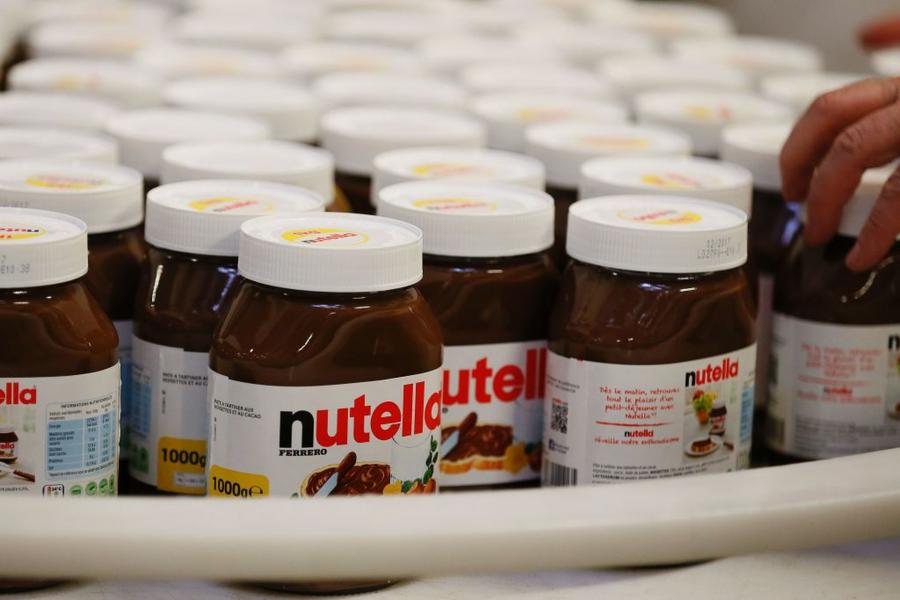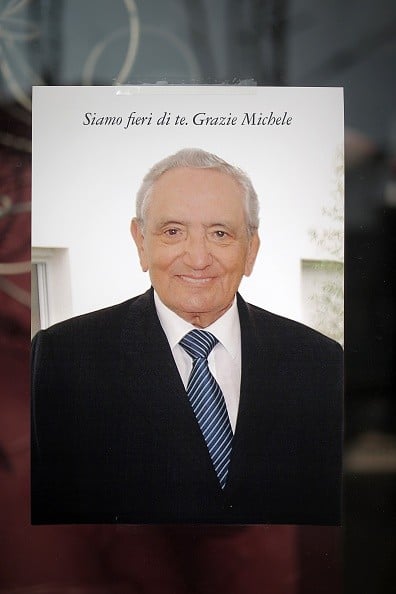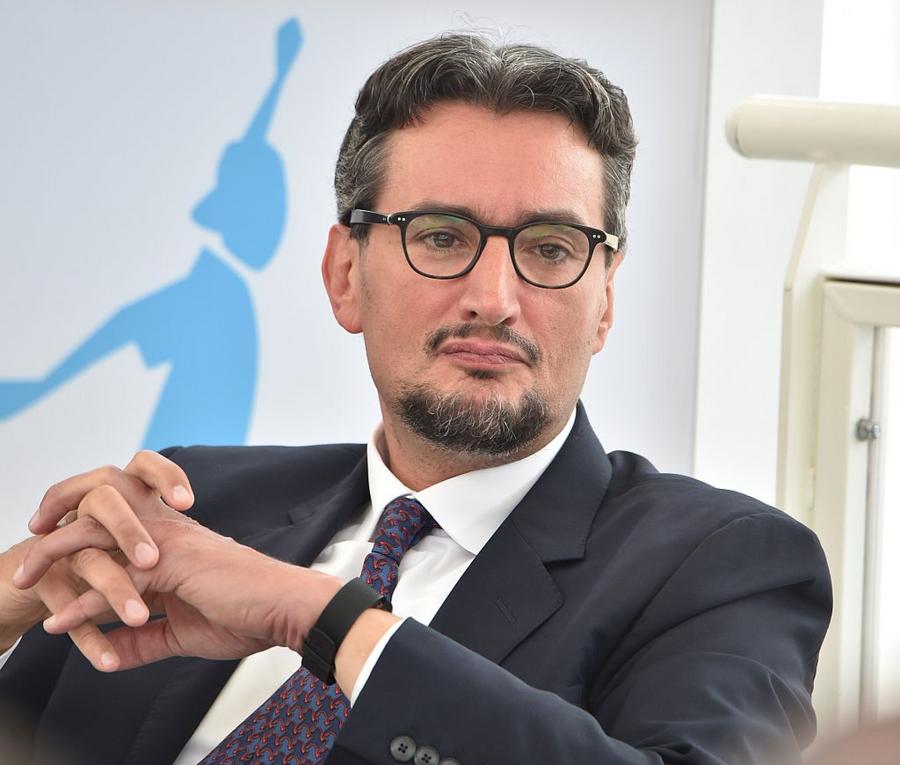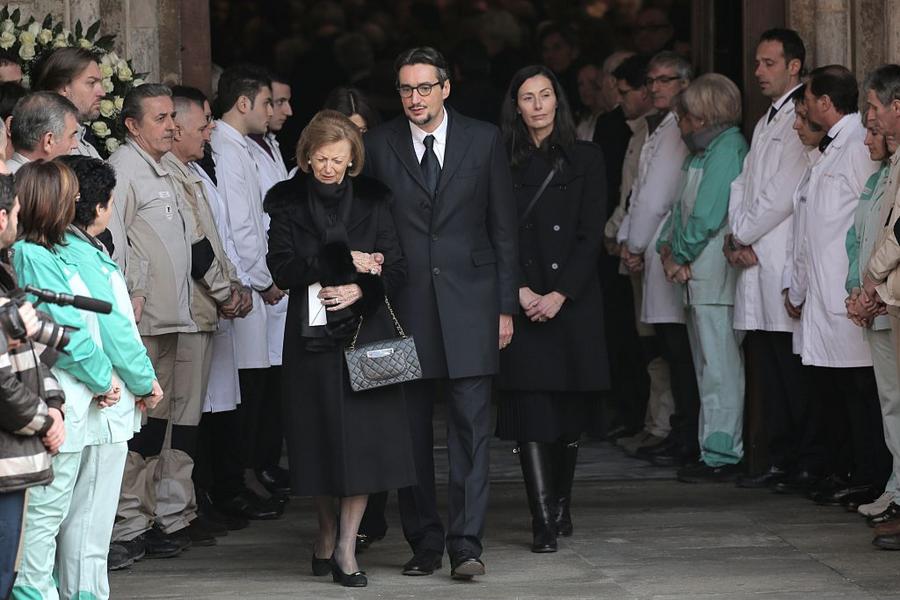With a web price of $55 billion, Giovanni Ferrero is the richest person in Italy by a mile. He leads the following billionaire by a margin of $30 billion. How do you assume Giovanni earned his fortune? And truly, he technically inherited his fortune from his father. So, how do you assume Giovanni’s late father, Michele Ferrero, earned what has been the most important personal fortune in Italy for a number of a long time?
Did he invent the Ferrari? Haha—clearly not. That was Enzo Ferrari. In the present day, Enzo’s son Piero Ferrari is Italy’s fifth-richest individual. And this is a enjoyable reality about Piero: Divorce was unlawful in Italy via the Nineteen Seventies. Piero was born in 1945, to not Enzo’s spouse, however to his mistress. Due to this fact, Piero’s legal right to his family name and inheritance couldn’t be formally bestowed till after Enzo’s spouse died in 1978, when Piero was 33! In the present day, Piero owns 10% of the publicly traded Ferrari (ticker image “RACE”), and that stake provides him a web price of round $10 billion.
Giovanni Ferrero and Piero Ferrari have quite a bit in widespread. They’ve related final names. They each have siblings who died unexpectedly at younger ages. They each inherited their fortunes from their father. And each of their final names ARE the enterprise. Besides, as a substitute of creating attractive supercars, Giovanni’s household enterprise makes scrumptious candies.
Maybe you’ve got heard of Ferrero Rocher? Or possibly the confectionery’s different manufacturers, Kinder and Tic Tac? However this is one other twist: All the Ferrero empire, one which generated Italy’s largest personal fortune, started with a humble product created throughout World Struggle II as a response to rationing and shortage. That product was referred to as Nutella.

(CHARLY TRIBALLEAU/AFP/Getty Photos)
From Household Store To Manufacturing facility Empire
All of it started in a small pastry store within the city of Alba, tucked within the rolling hills of Italy’s Piedmont area. In the course of the closing years of World Struggle II, Italy was battered, poor, and hungry. Sugar and cocoa have been luxuries. For an area baker named Pietro Ferrero, making an attempt to maintain his enterprise alive meant improvisation.
Pietro had grown up surrounded by hazelnut timber, which coated the Piedmont countryside. With cocoa scarce and costly, he determined to grind the native hazelnuts right into a paste and blend them with what little cocoa he might discover. The consequence was a dense, candy loaf referred to as Pasta Gianduja — half chocolate, half hazelnut, and completely born from necessity. It got here wrapped in foil and was meant to be sliced and unfold on bread. For Italians rising from years of warfare and rationing, it was a revelation.
Phrase unfold rapidly via the villages. Moms packed slices of the hazelnut loaf into their youngsters’s lunches. Shopkeepers could not maintain it on cabinets. Pietro and his brother Giovanni quickly formalized their operation, founding an organization referred to as Ferrero SpA and opening a small manufacturing facility in Alba. Giovanni targeted on distribution, constructing an environment friendly community that helped flip the household’s modest pastry store into an actual enterprise.
In 1949, tragedy struck when Pietro Ferrero died out of the blue, abandoning his younger son Michele, who was simply 24 years outdated.
The Reluctant Inheritor
When Michele Ferrero took over his late father’s firm, Italy was nonetheless rebuilding from the warfare. He wasn’t a educated businessman and did not have a school diploma. What he did have was a relentless curiosity and a deep sense of responsibility. His father’s invention had already captured native hearts; Michele wished to refine it and share it with the world.
By the early Sixties, Michele had revisited his father’s authentic method, adjusting the ratio of sugar to cocoa and grinding the hazelnuts to a smoother consistency. In 1964, he rebranded the product underneath a brand new title: Nutella. Inside months, it was flying off grocery cabinets throughout Europe.
The Relentless Innovator
As soon as Nutella took off, Michele Ferrero grew to become obsessive about the artwork and science of confectionery. He wasn’t content material to have one hit product — he wished a whole lineup of beloved sweets. Beneath his management, Ferrero launched “Kinder Chocolate” in 1968, the breath mint “Tic Tac” in 1969, and the golden-wrapped “Ferrero Rocher” pralines in 1982. Every product was the results of years of tinkering and testing.
Michele’s perfectionism bordered on legendary. He usually labored via the evening along with his closest crew of chemists and tasters, experimenting with texture, aroma, and sweetness ratios till each element met his requirements. Even after Ferrero grew into one of many largest chocolate firms in Europe, he insisted on personally approving each main recipe.
His quiet obsession labored. By the Nineteen Seventies, Nutella had grow to be a breakfast staple in Europe. By the Nineteen Eighties, Ferrero candies have been bought on 5 continents. The corporate’s success wasn’t only a triumph of selling — it was constructed on style, precision, and consistency.
The Monk Of Chocolate
Regardless of his wealth and energy, Michele Ferrero lived like a person indifferent from materials luxurious. He by no means gave interviews. He declined public awards. He prevented politics and the press totally. A religious Catholic, he attended Mass each day, made annual pilgrimages to Lourdes, and required each Ferrero manufacturing facility on this planet to have a statue of the Virgin Mary.
Those that labored for him described Michele as variety however exacting. He was recognized to recollect staff by title, to ask after their households, and to quietly present monetary assist when somebody was struggling. He thought of the corporate’s workforce a part of his prolonged household.
That wasn’t simply rhetoric. Ferrero staff have been supplied free well being care, organized firm holidays, and dependable bus transportation from the encompassing villages to the Alba manufacturing facility. At annual gatherings, staff would sing a tune in dialect thanking “Monsù Michele” — “Mister Michele” — for his or her livelihoods.
He as soon as wrote a letter to his employees that summed up his philosophy:
“I pledge myself to commit all my actions and efforts to this firm. I shall solely really feel glad when I’ve managed, with concrete outcomes, to ensure you and your youngsters a secure and tranquil future.”
It wasn’t simply speak. In additional than half a century, Ferrero’s Italian staff by no means went on strike.
Religion, Household, And Secrecy
As the corporate grew, Michele grew to become more and more protecting of its internal workings. He refused to take Ferrero public and insisted on maintaining product formulation secret. The recipe for Nutella, as an example, is guarded as tightly as Coca-Cola’s. Potential executives have been rumored to be noticed via a two-way mirror earlier than being interviewed face-to-face.
The secrecy prolonged to his private life. Throughout Italy’s turbulent Nineteen Seventies, when kidnappings of rich industrialists by radical teams just like the Purple Brigades have been widespread, Michele quietly moved his household to Monaco for security. From there, he commuted to the Alba headquarters by helicopter, usually flying in unannounced to style new merchandise or evaluation operations firsthand.
In 1962, Michele married Maria Franca Fissolo, a fellow Piedmont native who shared his religion and humility. The couple had two sons, Pietro and Giovanni, each of whom joined the household enterprise as adults. Like their father and grandfather earlier than them, they have been raised to view Ferrero not as a company, however as an obligation.
Even a decade after his dying, only some photographs of Michele exist on the web. Right here is the only photograph of Michele on Getty Photos; the writing on the prime says “We’re pleased with you. Thanks Michele”

(MARCO BERTORELLO /AFP)
Tragedy And Transition
In 1997, Michele formally handed day-to-day management of Ferrero SpA to his two sons, Pietro and Giovanni, whereas he continued to supervise the corporate’s strategic route. The transition appeared easy — till tragedy struck in 2011.
Whereas biking in South Africa, Michele’s eldest son Pietro suffered a deadly coronary heart assault. He was 47. The loss devastated the household and shook the corporate’s management. Michele, then in his mid-80s, returned to a extra lively position for a time, earlier than his well being started to say no.
Michele Ferrero died on February 14, 2015, on the age of 89. He left behind his spouse, Maria Franca, and his surviving son, Giovanni, who inherited management of the Ferrero Group.

Giovanni Ferrero (GIUSEPPE CACACE/AFP through Getty Photos)
The Empire Endures
Beneath Giovanni’s management, the Ferrero empire has continued to broaden. The corporate now operates in additional than 170 international locations, employs over 40,000 folks, and generates greater than $19 billion in annual income. In 2018, Ferrero made its boldest transfer but — buying Nestlé’s whole U.S. sweet division for $2.8 billion, bringing “Butterfinger,” “Crunch,” and “Child Ruth” underneath the Ferrero umbrella.
Giovanni, like his father, has maintained the corporate’s personal construction and low profile. Ferrero stays a family-owned enterprise headquartered in Alba, nonetheless recognized for its loyalty, secrecy, and constant high quality.

Maria and Giovanni at Michele’s funeral (MARCO BERTORELLO/AFP/Getty Photos)
Legacy Of A Quiet Billionaire
When Michele Ferrero died, he was the richest man in Italy, with a fortune estimated at roughly $26 billion. But he by no means appeared to care about cash. His legacy wasn’t luxurious yachts or flashy estates — it was the enduring tradition of kindness and excellence he constructed.
He remodeled a wartime improvisation into some of the beloved manufacturers on the planet. He expanded a household bakery into a worldwide powerhouse with out ever compromising on privateness, humility, or religion. And he created an organization that treats its staff as companions in success — a rarity in fashionable capitalism.
In his lifetime, Michele Ferrero helped make “Nutella” a family phrase and “Ferrero Rocher” a worldwide image of magnificence. He was, by each measure, a titan of trade — but he remained guided by the identical values that formed him in postwar Piedmont: simplicity, religion, and devotion to household.










